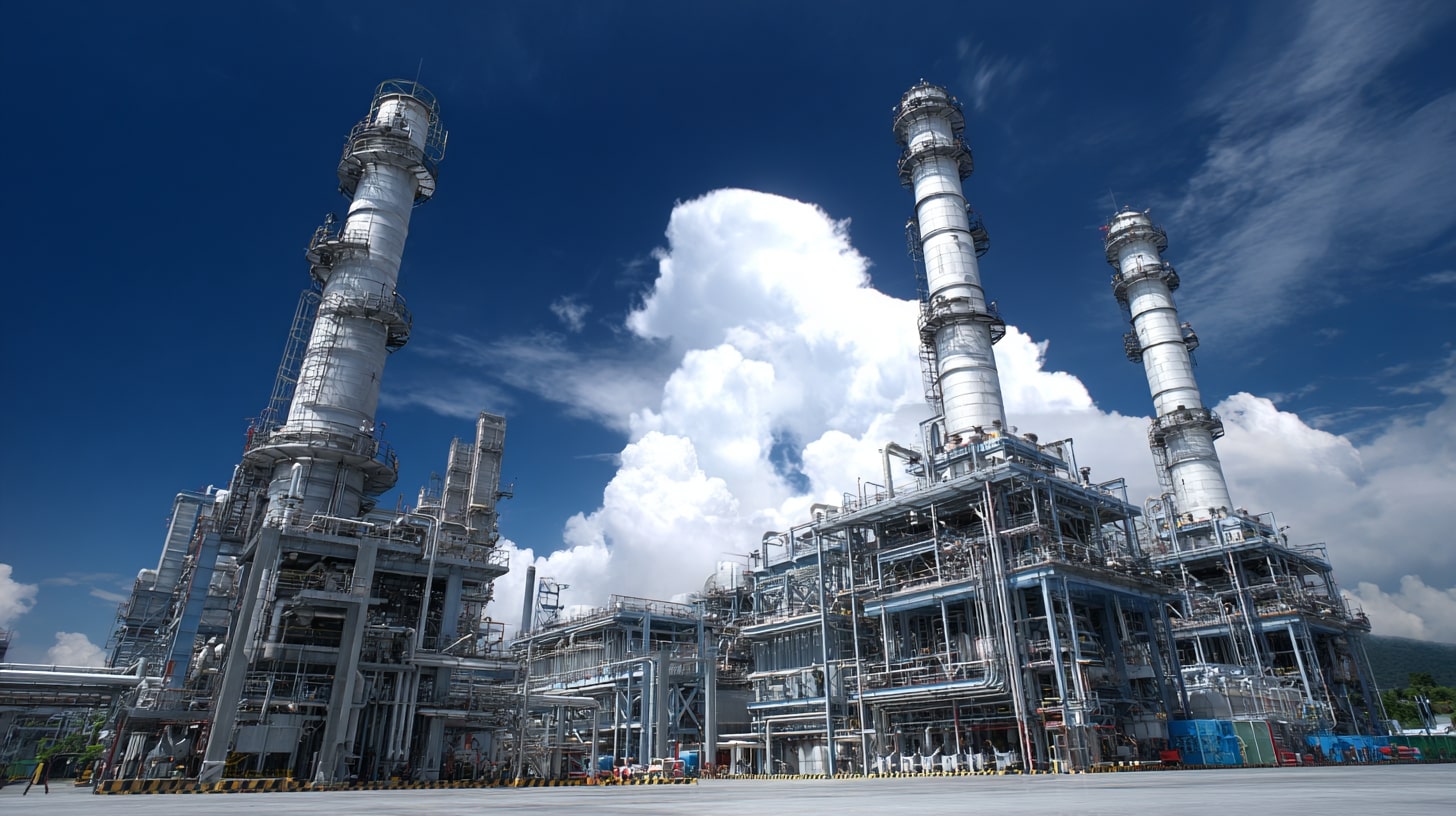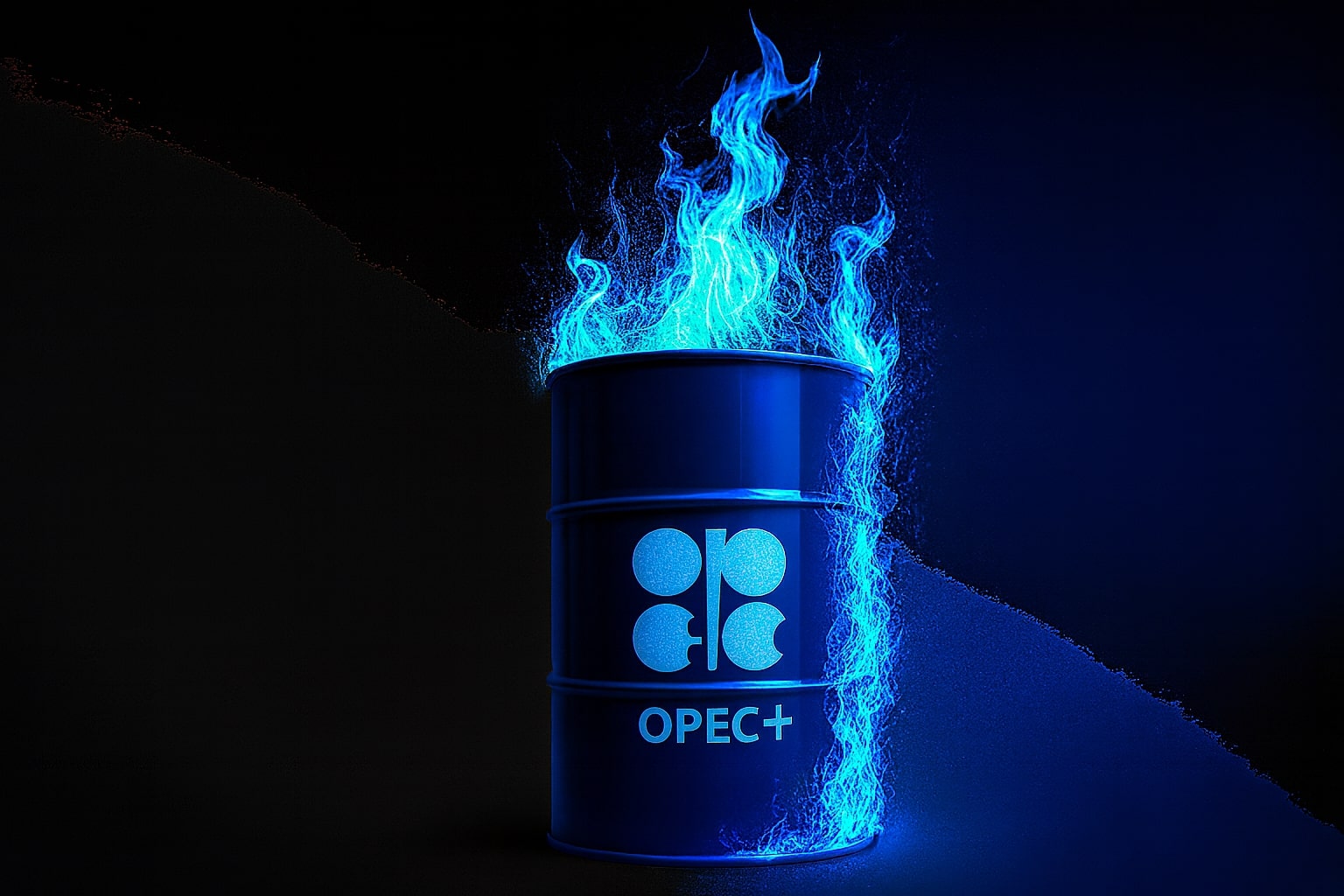
Natural Gas Price Forecast - (NG=F) Steadies at $3.32 as EU LNG Ban, Falling U.S. Output, and Winter Demand Fuel Bullish Setup
Natural gas prices hover near $3.32 per MMBtu, supported by EU LNG sanctions, 1 bcf/d drop in U.S. output, and record 16.5 bcf/d exports, with traders targeting $4.00–$5.00 as winter tightens supply | That's TradingNEWS
Natural Gas (NG=F) Holds Near $3.32 as Geopolitical Sanctions and Winter Demand Shape Market Direction
Natural gas (NG=F) traded steady around $3.32 per MMBtu, stabilizing after a volatile week dominated by European sanctions, U.S. output declines, and shifting winter forecasts. The European Union’s first-ever sanctions on Russian LNG have injected fresh geopolitical risk into the global gas market, tightening long-term supply expectations just as the northern hemisphere enters peak heating season. Traders are recalibrating around a complex mix of bullish policy shifts, constrained production, and unpredictable weather conditions.
EU LNG Sanctions Reshape Global Energy Trade
The EU’s phased ban on Russian LNG imports, scheduled to take full effect by January 2027, represents the most aggressive energy policy move since the collapse of pipeline gas deliveries in 2022. The restrictions target Russian cargoes and the “shadow fleet” of tankers, which have quietly maintained gas flows to Europe. In 2024, Russia supplied nearly 14% of the EU’s LNG demand, making the ban a structural turning point for the region’s energy independence strategy. With European buyers now forced to seek alternative supply from Qatar, the U.S., and Norway, the market faces longer-term rebalancing pressure that is already visible in futures spreads.
U.S. LNG Exports Hit Record as Supply Tightens
On the supply side, U.S. LNG exports reached a record 16.5 billion cubic feet per day (bcf/d) in October, driven by strong demand from Europe and Asia. The Plaquemines terminal has received final approval for its last two trains, while Golden Pass LNG remains on track for first production later this year. Despite these expansions, Morgan Stanley forecasts a tightening U.S. gas market, projecting prices could hit $5.00 per MMBtu by 2026. The bank expects U.S. inventories to exit October around 3.97 trillion cubic feet, roughly 5% above seasonal norms, but warns that a storage deficit will re-emerge this winter as exports grow faster than production.
Production Weakness Persists Across Key Basins
Pipeline flow data shows that U.S. natural gas output has fallen by about 1 bcf/d since September, with the Haynesville shale leading the decline. While rig counts have increased slightly — up by just four units month-over-month — overall drilling activity remains insufficient to offset rising LNG and domestic heating demand. Producers are maintaining capital discipline in response to last year’s price slump, creating an undercurrent of supply scarcity that could magnify price swings as winter intensifies.
Cooling Forecasts Ignite Seasonal Bullishness
Updated meteorological models show colder-than-expected conditions forming across the Midwest and Northeast, lifting heating demand expectations by nearly 8% week-over-week. Regional forward contracts have responded sharply: Algonquin Citygate and Chicago Citygate prices climbed roughly 11%, signaling stronger commercial and residential consumption heading into November. Although Pacific region storage remains comfortable, analysts caution that any cold outbreak could quickly deplete inventories, especially in Southern California, where SoCal Gas has reported increased drawdowns over the past two weeks
Read More
-
PPA ETF at $154: Can This Defense ETF Keep Beating ITA and SPY?
14.12.2025 · TradingNEWS ArchiveStocks
-
XRP ETFs XRPI and XRPR Pull In $975M While XRP-USD Fights To Hold $2
14.12.2025 · TradingNEWS ArchiveCrypto
-
Natural Gas Price Forecast: NG=F Hits $4.11 As Warm Winter Outlook Puts $3.913 Support At Risk
14.12.2025 · TradingNEWS ArchiveCommodities
-
USD/JPY Price Forecast - Dollar to Yen Can BoJ’s 0.75% Shock Break The 155–158 Range?
14.12.2025 · TradingNEWS ArchiveForex
Technical Picture: Consolidation Before Breakout
Technically, natural gas has rebounded from the critical $2.95–$3.00 support range, which has repeatedly served as a buying zone since September. The 20-day EMA sits near $3.32, acting as immediate resistance, while the 50-day and 100-day EMAs clustered around $3.21–$3.23 offer strong support. A daily close above $3.60 would mark the first confirmed breakout from the long-term descending channel, targeting $3.80–$4.10 in the short term. A failure to hold above $3.00, however, could expose $2.70, though analysts note that deeper pullbacks remain unlikely given tightening fundamentals and expanding export flows.
Futures and Forward Curves Signal Tightness Ahead
Across the curve, winter 2025–2026 contracts have firmed to an average of $3.75, reflecting bullish sentiment driven by anticipated storage draws. Open interest in December and January contracts climbed 6.2% week-over-week, indicating speculative accumulation around winter volatility. Data from Natural Gas Intelligence (NGI) shows strengthening prices across key U.S. hubs such as Permian, Waha, and Transwestern, where differentials have narrowed significantly since early October. Improved pipeline utilization and a rebound in industrial demand from Gulf Coast petrochemical facilities further reinforce price stability heading into the year-end.
Geopolitical Crosswinds and Structural Realignment
The coordinated Western sanctions — combining the EU’s LNG measures with U.S. restrictions on Rosneft, Lukoil, and Sovcomflot — are collectively reshaping global trade flows. Approximately 4.5 million barrels of oil equivalent per day in Russian gas exports are affected, with limited rerouting capacity through Asia. This shift benefits U.S. exporters operating at near-maximum throughput, tightening global supply and amplifying Europe’s dependence on transatlantic gas trade. For European utilities, the loss of flexible Russian cargoes introduces long-term price asymmetry that could persist well into 2027.
Storage, EIA Data, and Market Positioning
Despite the structural bullish setup, near-term fundamentals remain mixed. European storage facilities sit near 95% capacity, tempering immediate upside risk. Traders are awaiting the next EIA storage report, expected to show a 50–55 bcf injection, slightly above the five-year average. Should the data confirm a smaller build or the first seasonal withdrawal, volatility could spike as speculative longs reenter around the $3.60 resistance threshold. Meanwhile, options markets show increased open interest in $3.75 and $4.00 call strikes, hinting that traders are positioning for a potential winter breakout.
Outlook: Balancing Policy Risk and Seasonal Demand
The intersection of constrained production, record exports, and policy-driven supply realignment underscores a bullish structural trend for NG=F. With the U.S. Department of Energy forecasting export capacity growth from 14.5 bcf/d today to 20 bcf/d by mid-2026, domestic balances are expected to tighten further. Even modest cold spells or operational disruptions could lift front-month contracts well above current expectations. If momentum holds and resistance at $3.60 is cleared, traders could see $4.00 by late November and $5.00 by 2026, aligning with Morgan Stanley’s projections.
Verdict: BUY — NG=F Positioned for Structural Upside as Fundamentals Tighten
With natural gas (NG=F) holding near $3.32, the market stands at a pivotal juncture defined by geopolitics, weather, and supply discipline. The convergence of EU sanctions, lower U.S. output, and growing LNG exports has created a setup favoring higher prices through winter and into 2026. While short-term retracements remain possible, the medium-term trajectory points decisively upward, supporting a BUY outlook with targets at $3.80–$4.10 short term and $5.00 by mid-2026 as structural tightness deepens across the global gas market.



















